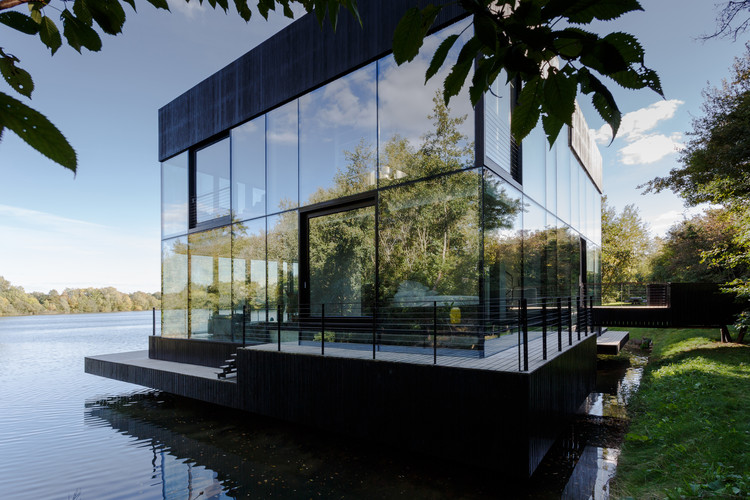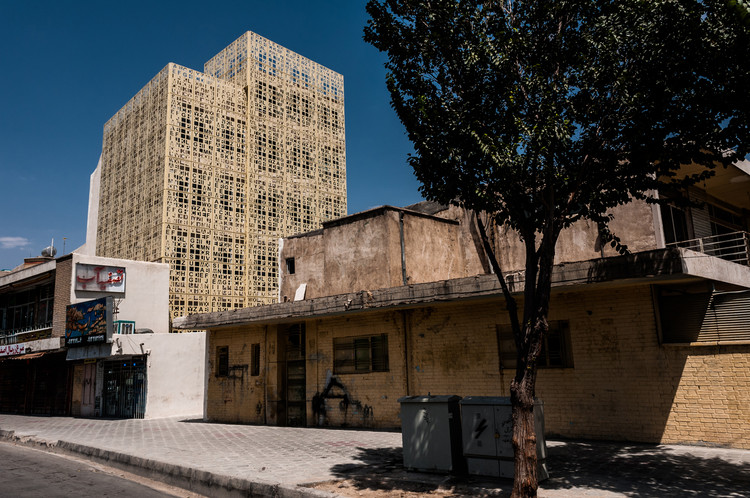Residencial Building Gelterkinden Merki Schmid Architects
2016-04-10 05:00
瑞士小镇Gelterkinden位于上巴塞尔比茨山(Sissach)和奥尔滕(Olten)之间的缓缓起伏的山丘之间,作为当地的铁路枢纽。在那里,所讨论的地块位于建筑区的南边,从那里你可以看到城镇和山谷的巨大优势。西部地区不能建设,不能顺利地流入农业农村。
The Swiss town of Gelterkinden is situated among the gently rolling hills of the Upper Basel Biets, located between Sissach and Olten, which function as a local railway junction. There, the plot in question is situated southwards bordering the building zone from where one has a great vantage point toward the town and the valley. The area towards the West cannot be built upon and flows smoothly into the agricultural countryside.
© Alicja Dobrucka
(Alicja Dobrucka)


该体积位于斜面的对角线上,被细分为三个层次。中间层的上坡面入口增强了体积的立体视觉锚固,而汽车的通道则有效地划分为底座。中间层被设计成一个独立的、有玻璃的区域.更有可能的封闭阁楼区,其循环栏杆容纳顶部水平。
The volume, situated diagonally to the slope, is subdivided into three levels. The uphill facing entrance on the middle level enhances the solid visual anchor of the volume, while the passageway for the car effectively divides into the base. The middle floor is devised as a free-standing, glassed-in area. The more likely closed attic area with its circulating balustrade accommodates the top level.


空间分配方案
Space allocation programme
房间的布局也是按照划分分为三个层次。位于一楼,朝山谷望去,有两个托儿所,有淋浴、厕所、单独的入口和通往花园的出口。这些房间不能转换成一个单独的单元。此外,在基地区域的一楼,台球室以及技术办公室和酒窖都可以进入。在大多数情况下,一楼被用作生活空间,吃角落和厨房。居住空间附属于一个办公室,也连接到通往其他地区的入口,以及一个自行车仓库。根据它的中心生活功能,这层楼的特点是一个对数状阳台,这是部分覆盖。房子的顶层设有开放的浴室、淋浴、厕所和更衣室。这层楼上有一个巨大的屋顶露台,为居住者提供了一个太阳甲板、一个睡莲池和一个室外壁炉,有一张长凳可供坐或躺在上面。
The layout of the rooms, too, follows the division into three levels. Located on the ground floor, looking out towards the valley, are two nurseries featuring a shower, a water closet, a separate entrance as well as an exit leading into the garden. These rooms cannot be converted into a separate unit. In addition, on the ground floor in the area of the base, the billiard room can be accessed as well as the technical office and the wine cellar located beyond. For the most part, the ground floor is used as a living space, eating nook and kitchen. The living space is affiliated with an office and also connected to the entrance opening up to other areas, as well as a bicycle storage. According to its central living functions, this floor features a loggia-like balcony which is partially covered. The top floor of the house accommodates the bedroom with an open bath area, a shower, WC, and a dressing room. A large roof terrace attached to this floor provides the occupants with a sun deck, a water-lily pond and an outside fireplace with a bench to sit or to lay on.
露台的裸露区域提供了与底层的视觉连接。这样,每一层楼都有自己的、单独的和可使用的外部空间。
The uncovered area of the balcony provides a visual connection to the ground floor. In this manner, each floor possesses its own, individual and useable exterior space.
© Alicja Dobrucka
(Alicja Dobrucka)




© Alicja Dobrucka
(Alicja Dobrucka)


材料、结构和技术
Materials, construction and technique
该建筑物主要代表一个具体的结构,并将直接和固定,被视为如此。因此,在安装吊顶时,不考虑浮动支撑梁和覆盖结构,但天花板的底部使混凝土可见。地板的混凝土表面用水法抛光,密封工艺将其细化为耐用的地板覆盖层。
The building primarily represents a concrete structure and will be, directly and fixedly, perceived as such. Ergo, when erecting the ceiling, floating support beams and covering construction were not considered but the underside of the ceiling makes the concrete visible. The concrete skin of the floors was polished using a water method, and a sealing process refined it into a durable floor covering.
© Alicja Dobrucka
(Alicja Dobrucka)


具体的主题是结合木窗,木工在内部建筑(厨房);橡木被用于内外板。一层过滤器,由金青铜阳极氧化铝拉伸金属,延伸到屋前-高玻璃-功能。
The concrete theme is combined with wooden windows, carpentry work in the interior construction (kitchen); oak wood was used for the inner- and outer panelling. A layer of filter, made of gold-bronze anodized aluminium stretch metal, extends outside in front of the room-high glassed-in features.
© Alicja Dobrucka
(Alicja Dobrucka)


因此,这一物质概念也在潮湿地区继续存在。因此,必须开发一个专门的结构设置,用于淋浴的镶板。这使得安装耐用的橡木贴面需要在如此高的要求下发挥作用。
This material concept is consequently also continued in the wet areas. Therefore, a special construction set-up had to be developed for the panelling of the showers. This enabled the installation of durable oak veneer which needs to function under such highdemands.
© Alicja Dobrucka
(Alicja Dobrucka)


所有装置都安装在混凝土粗糙的砖块中。热量是通过空气-水-热泵产生的,由此产生噪音的爆炸装置与换热器一起放置在外面。热量通过地板和天花板内的标签系统分配。控制通风使外部空气通过地球寄存器移动,从而使外部空气变暖,同时也能冷却热风。冲厕所需的水和外部龙头所需的水是从放置在地下的雨水水箱中获得的。
All installations are placed in concrete rough brickwork. Heat is generated via an air-water-heating pump whereby the blast apparatus, which causes a noise, is placed outside together with the heat exchanger. The heat is distributed by means of a TABS system inside the flooring and ceiling. The controlled ventilation moves the outside air over an earth register, and thus enables it to warm up the cold outside air but also to cool down the hot air. The water needed for the flushing of the toilet and the water needed for the outside spigots is obtained from a rainwater tank placed underground.
© Alicja Dobrucka
(Alicja Dobrucka)






















































Architects Merki Schmid Architects
Location Basel, Switzerland
Category Houses
Area 350.0 m2
Project Year 2015
Photographs Alicja Dobrucka
Manufacturers Loading...































